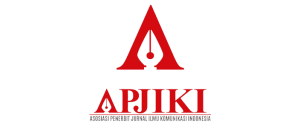Penerapan Peran Public Relations Pada Program Employee Relations Sebagai Upaya Meningkatkan Loyalitas Karyawan.(Studi Kasus tentang Penerapan Peran Public Relations Pada Program Employee Relations Oleh Divisi Human Capital Development PT. Kao Indonesia)
DOI:
https://doi.org/10.30656/lontar.v3i3.538Abstract
This study titled: Application of Public Relations Role in Employee Relations Program as an Effort to Increase Employee Loyalty. The object of this research is PT. Kao Indonesia. The background of this research is due to the employee relations program at PT. Kao Indonesia is conducted by the Division of Human Capital Development, but in It’s implementation on daily life it’s adopt the role and tasks of Public Relations. This study aims to examine and analyze how the implementation of Public Relations role can increase the employee loyalty at PT. Kao Indonesia. The theory and concepts used is the concept of public relations and employee relations. The research uses qualitative approach with a studycase design. The results showed that the Human Capital Development Division had implemented a Public Relations role in implementing employee relations program, although more needs to be repaired. This program aims to establish a great way of communication, convenient, and mutual understanding between the employee and corporate management. The participation of the employees about employee relations program was relatively high, because this program was the idea of the employee and represents the wishes and needs of the employees.
Â
Keywords: Employee Relations, Public Relations, Human Capital Development.
Â
Â
Downloads
Published
Issue
Section
License
By submitting an article to the journal, the author(s) agree to transfer the published article's copyright to the journal, which will act as the publisher. This means the journal will have the right to publish the article in various forms, including reprints. The journal will maintain the publishing rights to the published articles.
In line with the license, authors and third parties (readers, researchers, and others) are allowed to share and adapt the material. In addition, the material must be given appropriate credit, provided with a link to the license, and indicated if changes were made. If authors remix, transform, or build upon the material, authors must distribute their contributions under the same license as the original.






